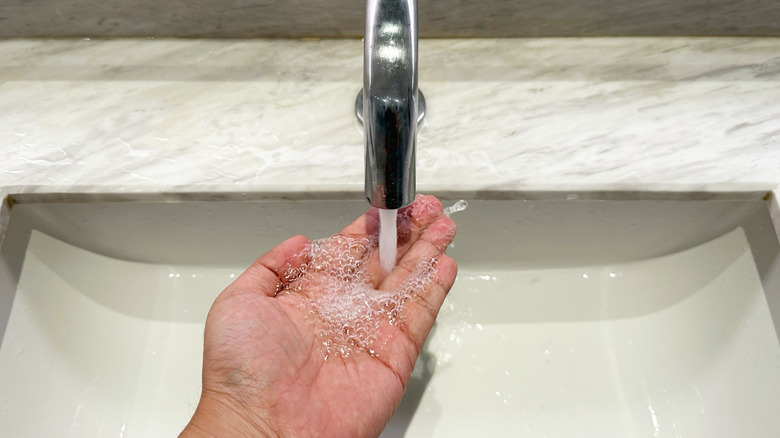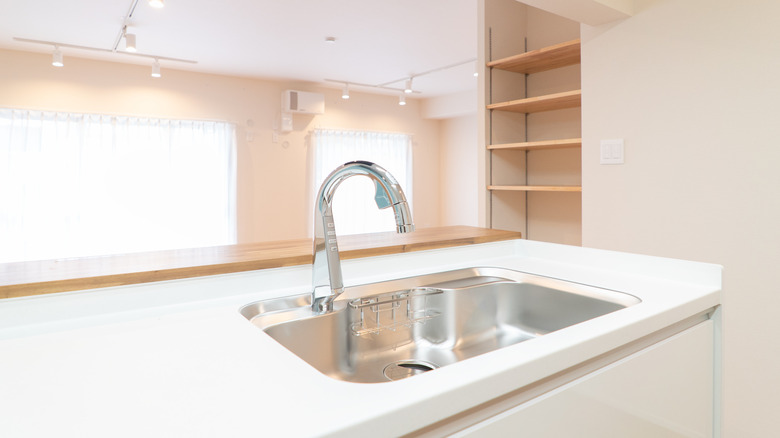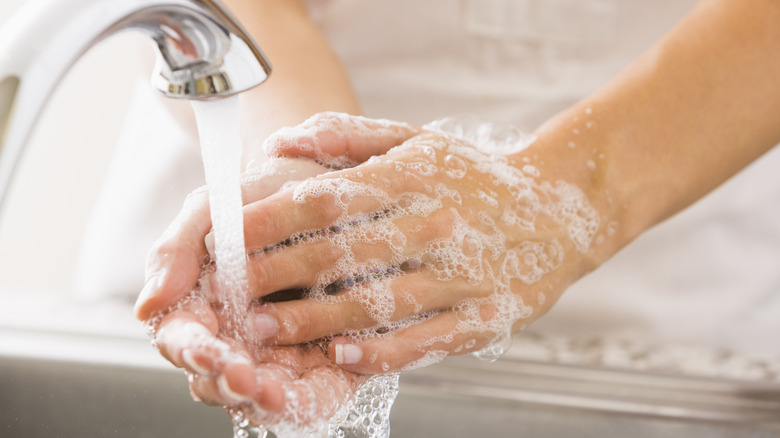The Benefits Of Installing A Touchless Faucet In Your Kitchen
The kitchen sink sees a lot of use, day in and day out, by every person in your home. As a result, it can get very dirty and collect a lot of germs over time. One of the ways to cut down on this, while also improving convenience in the kitchen, is to install a touchless faucet. When you have a touchless faucet, you'll be able to operate it hands-free when you need it the most — water will start flowing as soon as the sensor notices the motion of something underneath.
More than just a simple parlor trick, installing one of these faucets in your kitchen can provide you and your family with a variety of benefits. A touchless faucet brings lot of newfound convenience, as it allows you to get washed up even when your hands are full or dirty. Touchless faucets can also help your family save water, while also increasing safety via less bacteria exposure.
How a touchless faucet can benefit your home
Touchless faucets are one of the easiest updates you can make for a healthy home. A touchless faucet can make your life more convenient with its easy activation. If you're busy in the kitchen and your hands are full, it will be much easier to access the water you need. This can be very useful when cooking, for example, especially if you're dealing with meat or raw eggs. Because of that, they are safer and more hygienic than regular faucets: There will be no need to use handles or knobs of any kind, so this can reduce the spread of germs.
You can also set the ideal temperature for your touchless faucet and ensure that the water is never too hot or dangerous for those who use it. Additionally, a touchless faucet will help your family save water for the simple fact that it prevents water from being left running accidentally — it will only activate when you're actually using it. Cleaning these faucets is also easy: Because you'll touch a touchless faucet less often, there will also be fewer fingerprints to clean, less accumulation of dirt, grime, and mineral deposits, and less wear and tear over time. All in all, it's a pretty solid deal.
Disadvantages to consider when installing a touchless faucet
Although touchless faucets are convenient, hygienic, and useful in many ways, they have their downsides as well. There's a bit of a learning curve to using them and it can take some getting used to. The sensors can be frustrating to deal with and won't always turn on and off as desired. Also, touchless faucets work by relying on the help of electricity, so you'll need to keep them plugged into a power source. Power outages can disrupt your usage. Also keep in mind that the cost of touchless faucets is generally higher than for standard faucets, and they don't last as long — while a standard faucet will likely last 20 years if well-maintained, you're only getting a decade from most touchless models.
With all that said, touchless faucets are a great option for many homeowners. So, weigh the pros against the cons, be informed, and decide if the advantages are convincing enough to guarantee that installing one will be the right choice for you.


